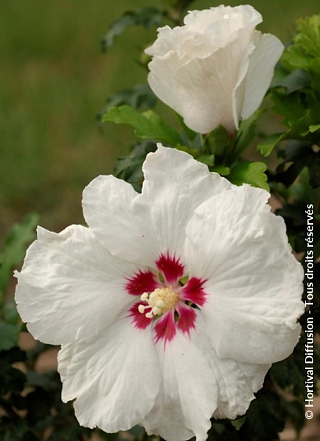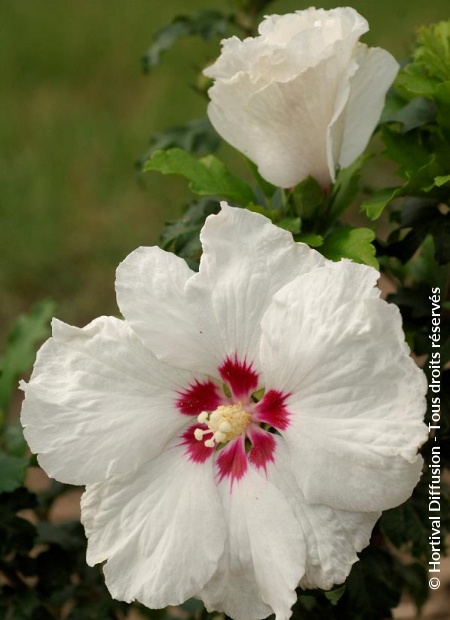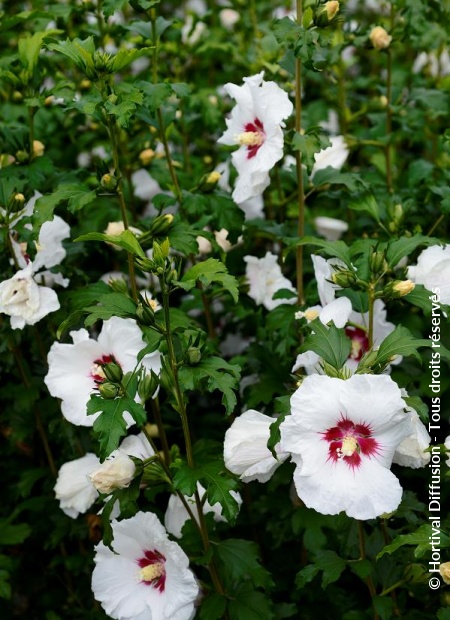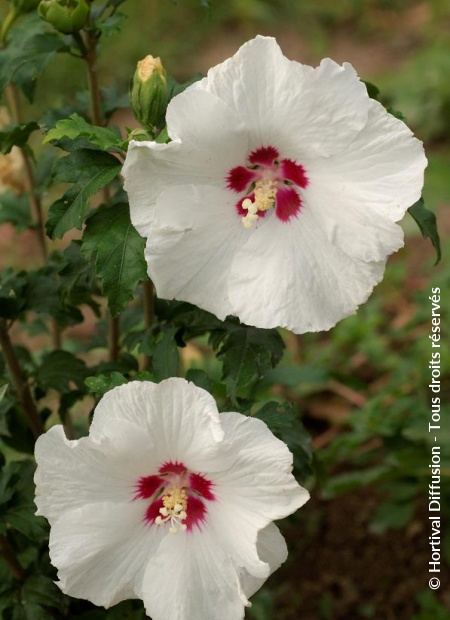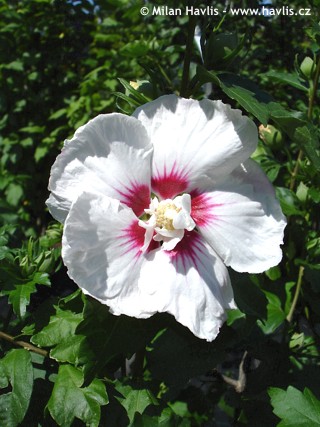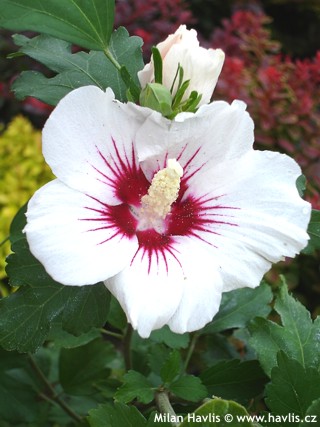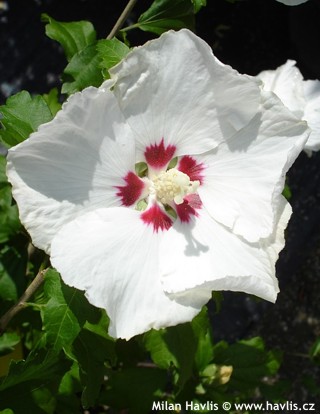Hibiscus syriacus 'Minomb' SUP'HEART Rose-of-Sharon
size/type
medium-sized shrub,taller shrub
usual height
1,5-3m
usual width
1-1,5m
leaves
deciduous broadleaf
colour of leaves
flowers
showy
colour of flowers
blooming time
July-September
location
full sun
soil type
neutral to alkaline
soil moisture requirements
evenly moist (dislikes drought)
USDA zone (lowest)
5 (down to -29°C)
winter protection
for zone 5+6

for zone 7

categorized
Hibiscus
Rose-of-Sharon deserves more attention for its abundant flowering in summer. These maintenance-free shrubs come from eastern Asia and are the inevitable ingredient of every summer garden which they highlight with a wide range of coloured flowers. There has been a number of cultivars available since its discovery. They have various bloom colours, shapes and sizes, as well as variegated leaves. SUP‘HEART® is an improvement over an older variety Red Heart selected by French nursery Pepinieres Minier. It was granted an EU patent 37690 in 2014.Description of the plant:
SUP‘HEART® Rose-of-Sharon produces snow-white, large flowers that are 10-11 cm across, and decorated with a small deep maroon eye. Some flowers have 5 but others bear 6 of them which makes them rather interesting. Flowering begins in July and lasts until all buds have gone - sometimes by end September. The plant grows into a densely branched, upright shrub. SUP’HEART® Rose-of-Sharon was awarded AGM (Award of Garden Merit) by the British Royal Horticultural Society (RHS) in 2020.It has very decorative leaves that are unique. They are deeply lobed, palmate, mid to dark green and coarsely toothed. If they turn yellow in summer the plant manifests too much water at the roots. They are either over-watered or planted in too heavy soil where it has not established yet.
Pruning is an issue that always gets me started here. Hard pruning leads to larger flowers, that's true, but also production of long, immature, flexible twigs. The only cut I recommend is such that rejuvenates old plans – prune it hard in early spring by 50-75 % and let it grow for another 10 years or so.
Rose-of-Sharon is quite adaptable of soil type. It can take drought but does not look good if dry for too long. It loves moisture fully established plants thrive on occasional flooding in summer, but you cannot transplant it into standing water. Old plants dislike peat. Selective fertilizers enhancing flowering are convenient but not crucial. Place it in full sun only. Fully hardy to min. -27 °C (USDA zone 5) and not suitable for pots.
Last update 20-09-2021
WANT TO TRY A SIMILAR PLANT?

































